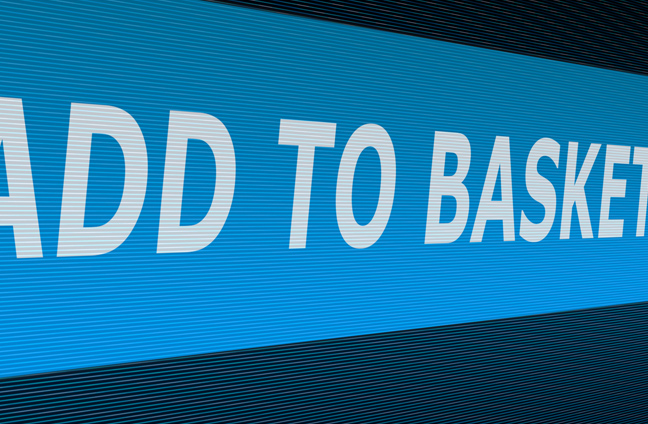A report by OrderDynamics has likened the challenges of ecommerce to those of modern dating. While repeat customers are crucial for generating healthy revenues, retailers often find themselves fishing for a second “date.” As with dating, the keys to success for brands is to forge meaningful connections (enabling effective personalization), to be themselves, and to play their cards right with the nature and frequency of their communications to give themselves the best chance of winning consumers’ hearts.
“Retailing today is a lot like dating.” That’s according to a report by OrderDynamics. Certainly there are some striking similarities. After all, the first challenge in both retailing and dating is that “first you have to attract customers. Once they’ve made an initial purchase (or committed to a first date) you need to convince them to make subsequent purchases (or go out with you again).”
The problem for both retailers and perpetual singletons is often the same: securing that second “date.” For retailers, frequent, repeat customers are a huge part of running a successful business.
Research by OrderDynamics revealed that “customer spend usually increases over the course of [a brand] relationship,” and “an analysis of the purchasing patterns of more than 4 million consumers across a sample of 20 retailers revealed a positive correlation between the number of purchases, [and] Average Order Value (AOV)”. For example, one retailer reported that the fifth purchase from loyal customers is, on average, 30 percent higher than purchases from new customers.
Wooing Customers: The 4 Types Of Retailers
OrderDynamics identified four different kinds of retailers, based on how often they followup with consumers who signed up for a mailing list:
- Jilters: 55 percent of retailers didn’t send any followup.
- Stalkers: 7 percent of the retailers sent up to 17 emails in a four-week period.
- Desperados: 15 of retailers sent between six and 10 emails in a four week period on average.
- The cooly keen: 46 percent of retailers sent between one and five emails in a four-week period.
Are Customers Interested?
Are retailers advances going unnoticed? Seventy-four percent of shoppers said they read emails from retailers. Of those, how often do shoppers read retailer emails?
- Always: 22 percent.
- Usually: 46 percent.
- Never: 8 percent.
What can get customers more interested?
1. Personalization
The key to improving these open rates is greater personalization. After all, there’s no bigger turn off than a date who doesn’t seem to listen or connected with things that are important or interesting to you.
OrderDynamic’s report found that:
- 23 percent of retailers were doing personalization well.
- Around 33 percent were doing personalization poorly (one researcher “saved a men’s fleece to the online basket and then received emails about women’s sweaters.” and in another case “a pet-supplies retailer sent promotional emails about cat and dog food after [the test user] browsed exclusively in the fish and aquatics department.”
 Research also revealed this amazing statistic: 74% Of Online Retailers Send Irrelevant Promotions.
Research also revealed this amazing statistic: 74% Of Online Retailers Send Irrelevant Promotions.
A further 30 percent bombard consumers with irrelevant emails.
The impression it gives is a lack of listening skills on the part of the retailer. Most consumers now expect a level of personalization. Not giving consumers what they want is a definite turnoff.
2. Be Yourself
Another area turning consumers off is when retailers aren’t themselves, and overcomplicate things by introducing third parties.
- Only 15 percent of retailers offer consumers end-to-end order tracking through their own website, without involving a third party.
This is often a deal-breaker for consumers:
- 56 percent of shoppers want order tracking exclusively via the retailer’s own platform.
- 19 percent of consumers don’t mind hearing from multiple parties about an order, including delivery companies.

3. Take It To The Next Level
Some retailers play hard to get, but others wear their hearts on their sleeves. Many retailers were eager to take it to the next level with customers who had browsed the site or added items to a basket:
- 44 percent of retailers sent a follow-up email offering an incentive for purchase within four weeks.
As dating can be, it’s often a game of frequency.
- 32 percent of those retailers offered an incentive straight away.
- 5 percent wait a day and 6 percent leaving it a week or longer (these retailers obviously are waiting to see if the customers to come to them first).

Why Long-Term Loyalty Is So Valuable
The ultimate reward for a retailer that manages to woo consumers is the long-term loyalty that encourages a brand-customer relationship to blossom. A Smarter Insights article recently summarized that winning this kind of loyalty requires personalization, rewards, and discounts.
Research quoted in the article and researched by Coniq backs up OrderDynamics findings. They found that consumers were two times more likely to return with a loyalty card. Loyalty habits showed that 80 percent of 1,000 customers would return if they were offered a loyalty scheme and 70 percent of your social followers expect rewards.
Retailers that listen to consumers and personalize their services, communications, and incentives will give themselves the best chance of winning the hearts of consumers.



